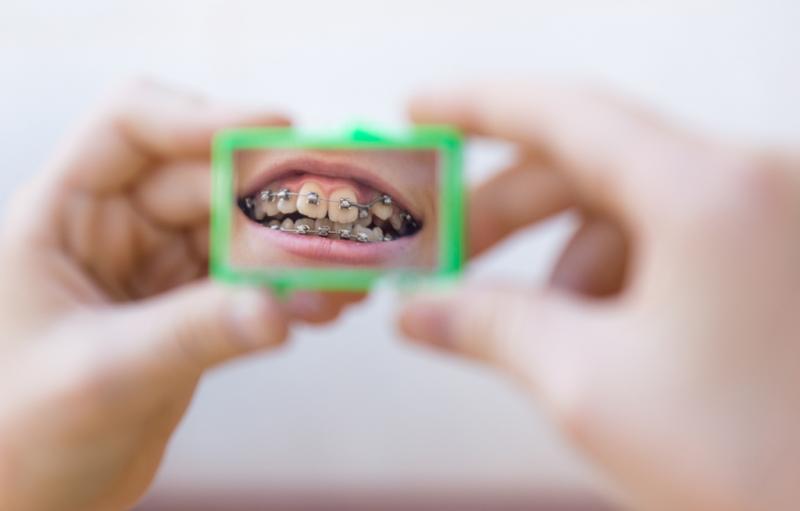Should I Get Braces or Invisalign for My Kid?

After a visit with the pediatric dentist, they may have noticed your child's teeth are unaligned and need to be treated to correct them. The image of metal braces comes to mind for most people as a means of treatment. After all, it's practically common knowledge of what braces do and look like for the most part.
However, braces aren't the only solution to crooked teeth.
There is another option parents can opt for - that's Invisalign. Compared to braces, Invisalign's treatment looks very different from one another. Not only in looks but also in what it offers as a means of treatment.
See how braces and Invisalign stack up against one another, weighing their pros and cons before deciding what form of treatment is best for your kid!
What to Expect from Braces & Invisalign
How Treatment Works
Braces and Invisalign are meant to help straighten out your teeth. Yet, both are done differently.
Braces are the most recognizable form of treatment as they're known for the metal brackets being glued individually to each of the teeth. With an archwire, it helps to shift teeth by putting pressure on the teeth and jawline as well as connecting elastic O-rings to the brackets. However, braces aren't always metal. They include either ceramic or lingual ones, which work behind the teeth. You can expect with the way that braces are designed that it's required to be adjusted periodically to be tightened and for elastic bands to be switched out.
Meanwhile, Invisalign is designed to look like a clear mouthguard fitted around your teeth. Invisalign works to straighten out your teeth by taking a 3D scan of your mouth and using it as the basis for changing the teeth's position. They accomplish this by using a series of molds to force the teeth into straightening. When given Invisalign, you won't need to see to make further dental visits since you're already given aligner trays for the current and several phases. Having everything already prepped results in not needing to go to the clinic for every next step of treatment.
Between these two forms of treatment, you can expect the approach taken by braces to be a better choice for seeing successful results in kids with more complicated cases. Invisalign is generally best suited for kids with more straightforwards cases.
Comfortability of Treatment
It's important to consider comfort when choosing the right treatment to align your child's teeth. After all, they are the ones who need to deal with them daily.
Regarding pain, having braces is more painful by comparison. The process of tightening teeth together can have that effect. Since Invisalign is meant to mold your mouth while working to straighten them, it is significantly less painful.
Another point of comfortability is whether your child is comfortable with how it will look on them. Unfortunately, braces can still be deemed 'ugly' and affect your child's self-esteem. If your child is worried about how it can look, Invisalign is a better option since it looks practically invisible.
Treatment Maintenance Level
Considering the level of maintenance for each treatment option is imperative towards ensuring they work and prevent any further oral issues from occurring. Another important reminder is to assess the level of responsibility your child can handle when considering how they might go about maintenance.
Ask yourself these questions:
How Good is My Child's Oral Hygiene?
If your child isn't the best at brushing and flossing, braces can make it even more difficult to maintain oral hygiene. It can heighten their risk of staining and decaying their teeth since braces remain in your mouth always. As a result, they must be mindful of what they eat - they can't have anything sticky or risk repairs that can prolong treatment time. Meanwhile, Invisalign can be removed, making it easier to brush and floss.
Is Your Child Forgetful?
Invisalign might seem nice since you can easily take it out. Yet, there is a reason why there is worry among parents about having young kids with Invisalign. Younger children are more likely to misplace or lose it, which can pose an issue since treatment is only effective if worn for at least 22 hours daily. Plus, Invisalign is more expensive than braces, so losing them would mean paying more to replace them. However, with braces, they're stuck to their teeth and won't go anywhere while working towards straightening their teeth.
Invisalign and braces are two different ways to achieve the same result. You honestly can't go wrong with either one. It all depends on how much you're willing to spend and considering your child's comfortability and level of responsibility. When bringing those together, you can find a treatment that suits your child best and get their teeth corrected in no time!
More to Read:
Previous Posts:





